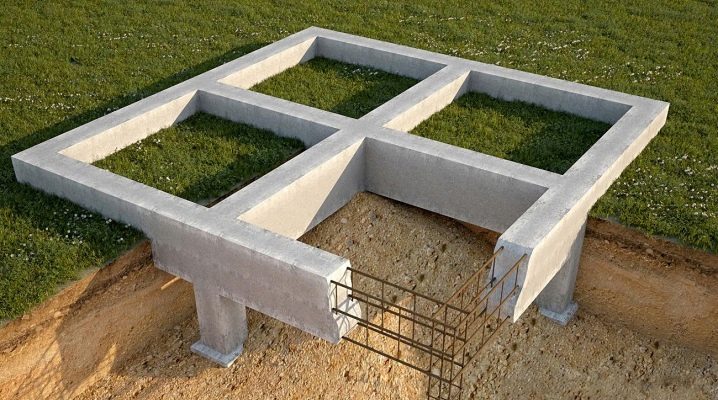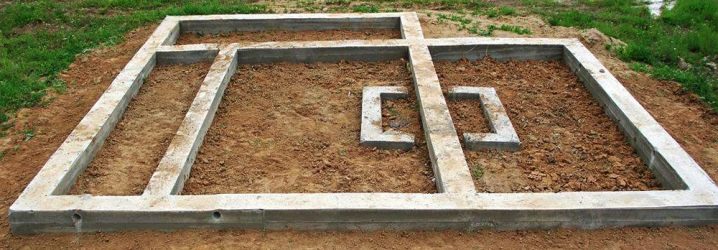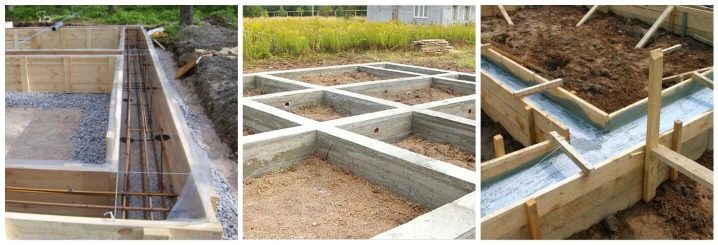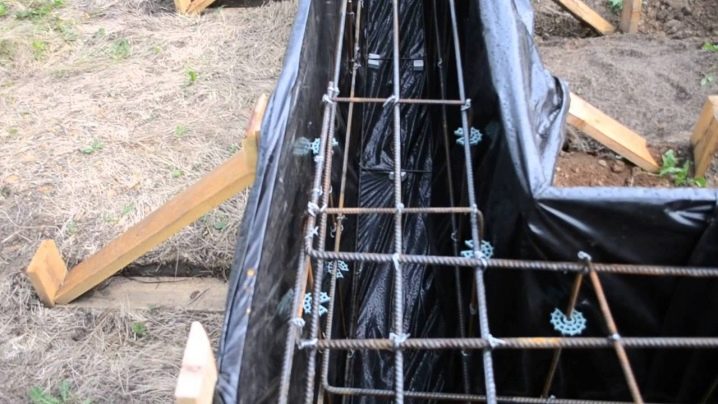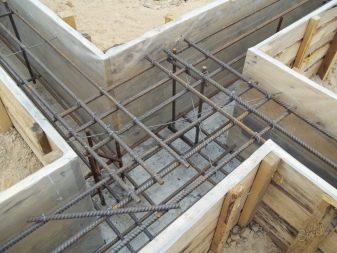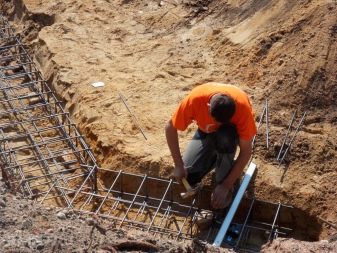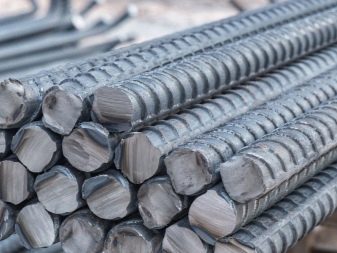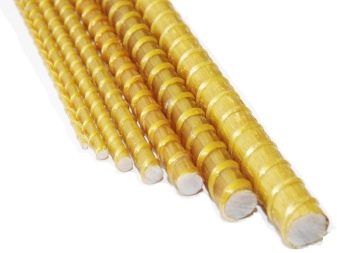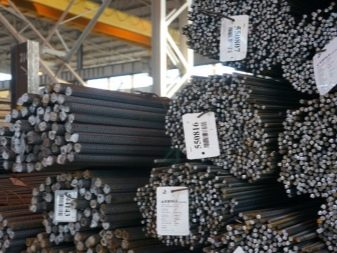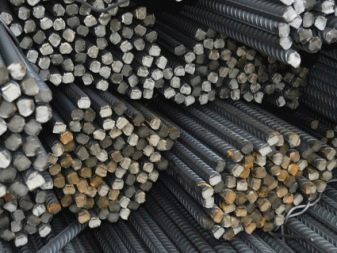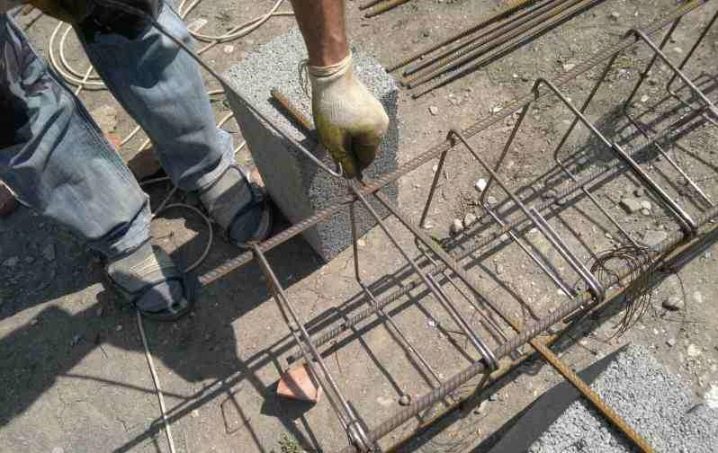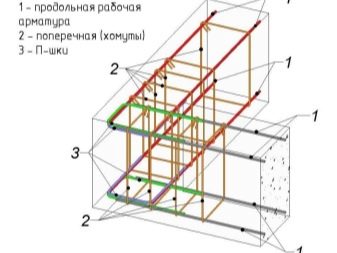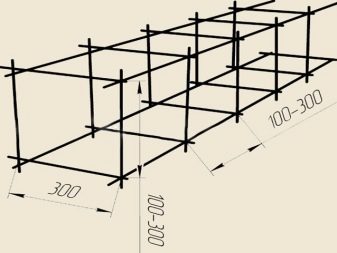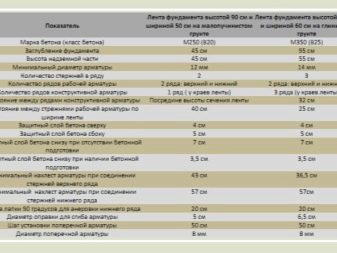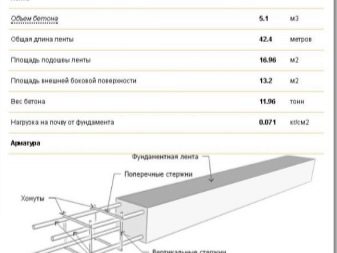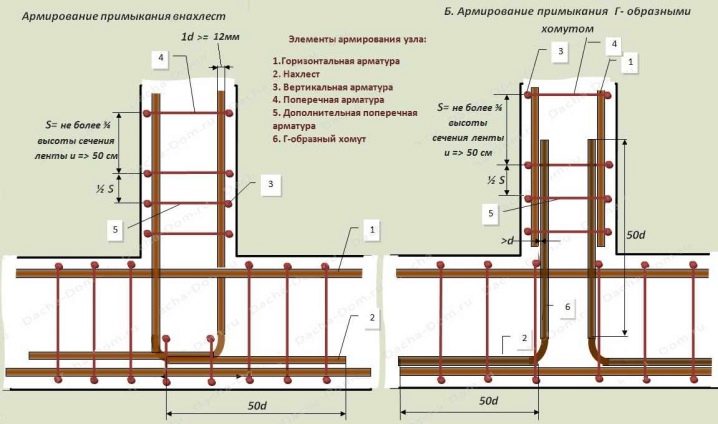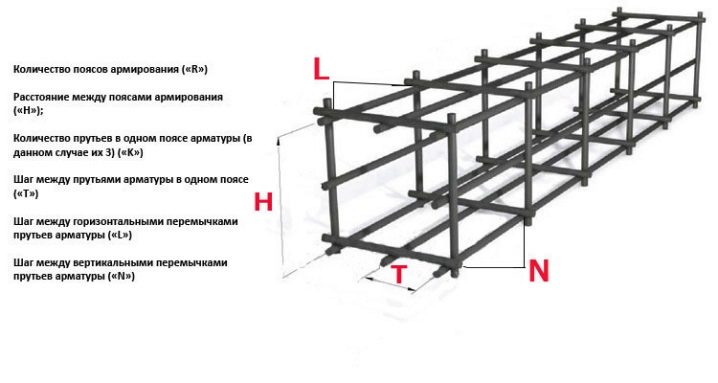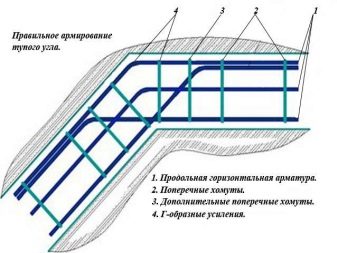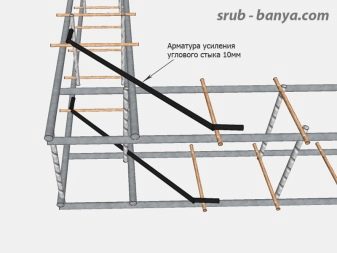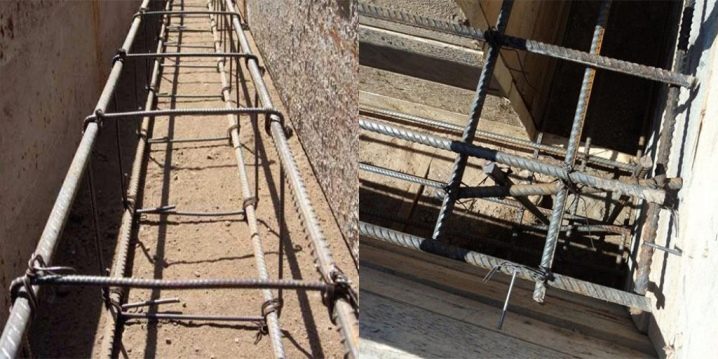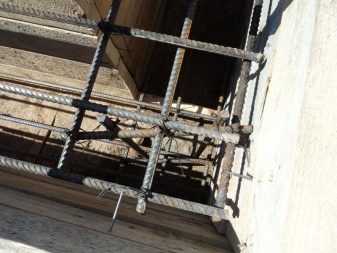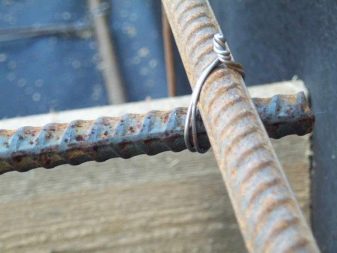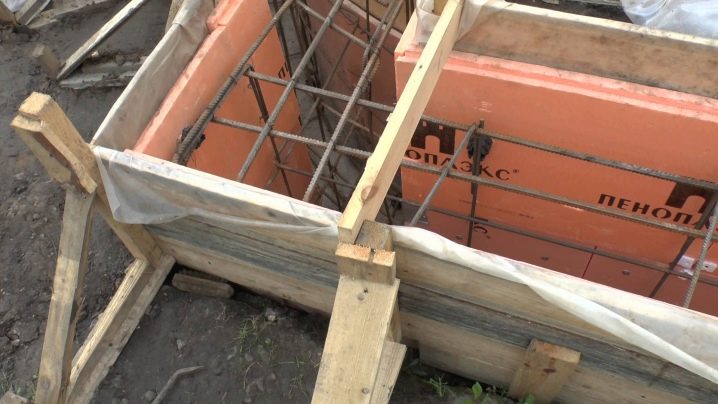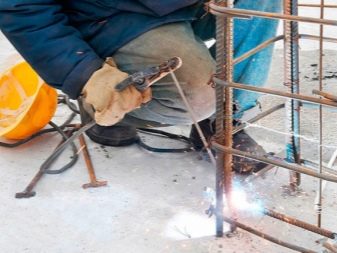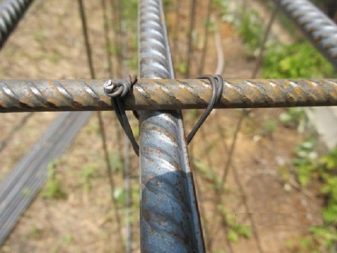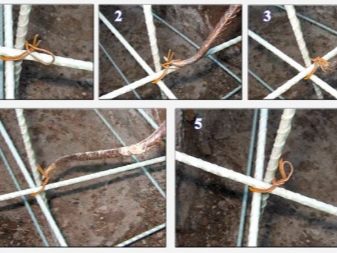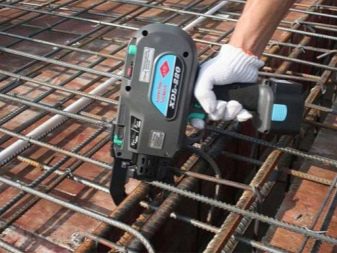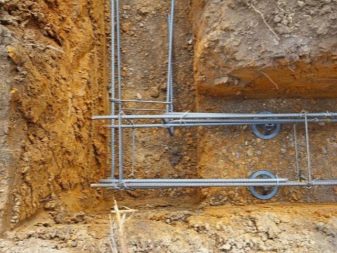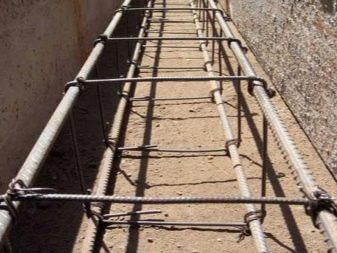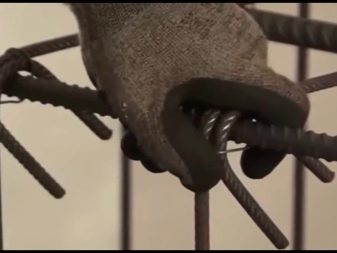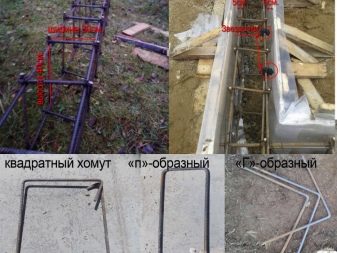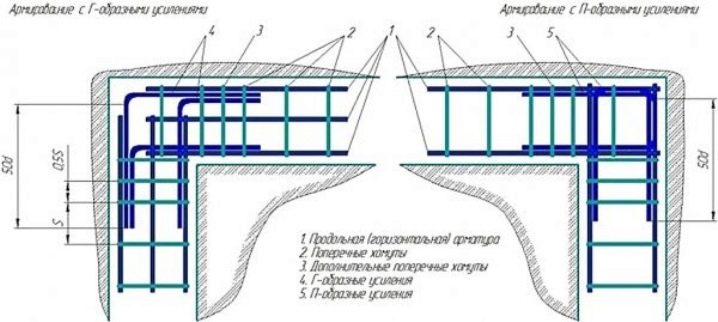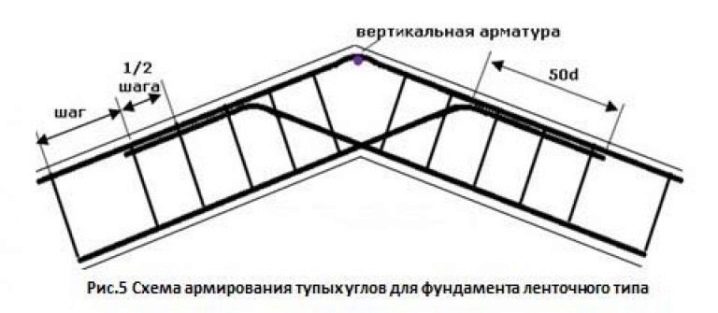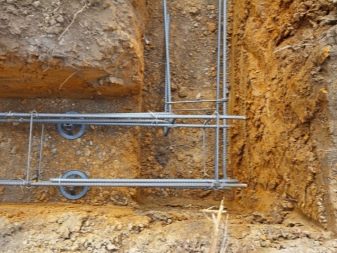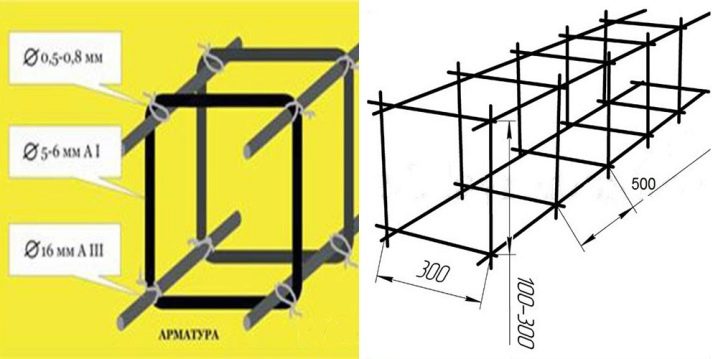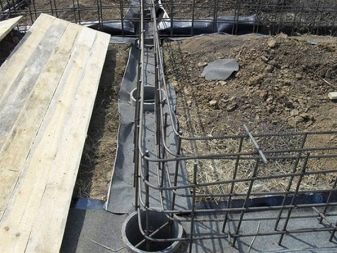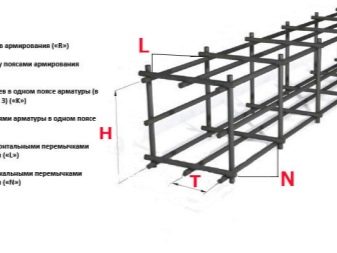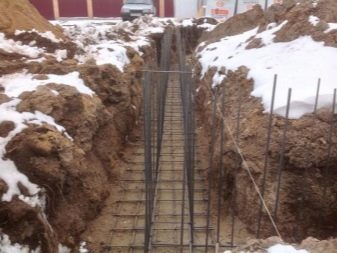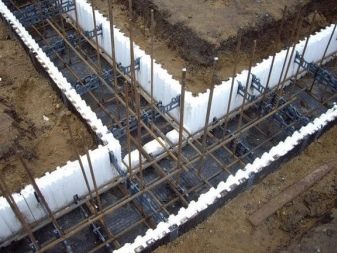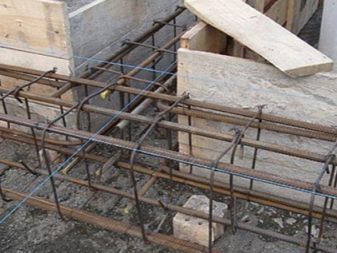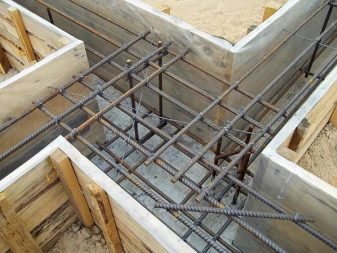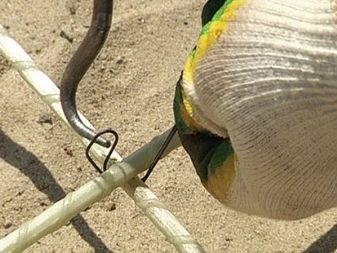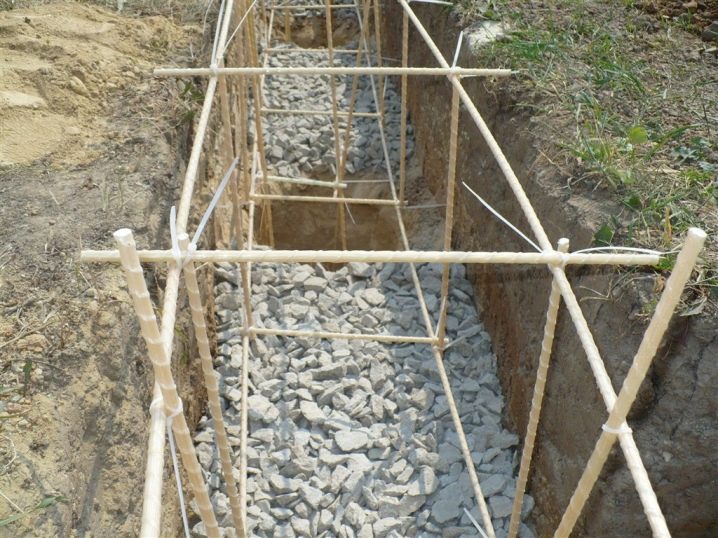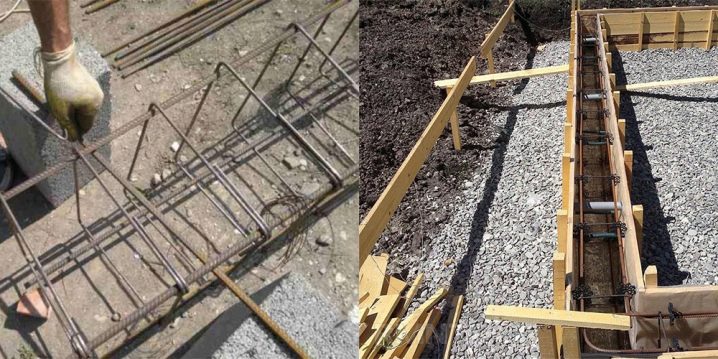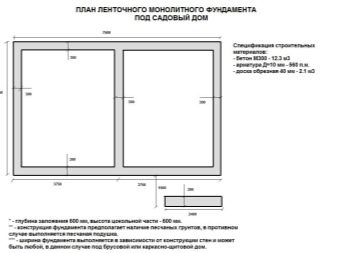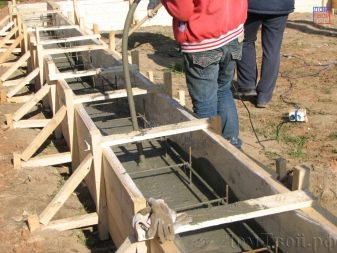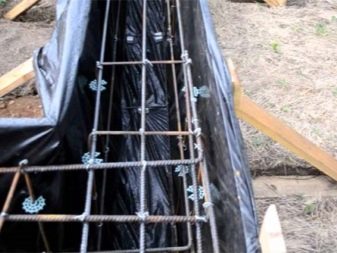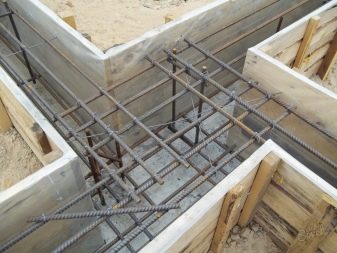Subtleties of the process of reinforcement strip foundation
Any building can not do without a reliable and strong foundation. Foundation construction is the most important and time-consuming step. But in this case all the rules and requirements for strengthening the foundation must be observed. For this purpose, they build a strip foundation that is able to make the foundation of the structure strong and reliable. It is worth considering in more detail the features of the strip foundation, as well as the technology for reinforcing the structure.
Special features
The strip foundation is a monolithic concrete strip without gaps in the doorways, which becomes the basis for the construction of all walls and partitions of the structure. The basis of the tape structure is a concrete solution, which is made of cement brand M250, water, sand mixture.For its hardening used reinforcing cage, made of metal rods of different diameters. The tape deepens for a certain distance into the soil, simultaneously protruding above the surface. But the strip foundation is subjected to serious loads (groundwater movement, massive construction).
In any situation, you need to be prepared for the fact that various negative effects on structures may affect the condition of the foundation. Therefore, if the reinforcement is made incorrectly, at the first slightest threat, the foundation may collapse, leading to the destruction of the entire structure.
Reinforcement has the following advantages:
- prevents soil subsidence under the building;
- affirmatively affects the soundproofing qualities of the foundation;
- increases the stability of the foundation to sudden changes in temperature conditions.
Requirements
Calculations of reinforcing materials and reinforcement schemes are carried out in accordance with the rules of the functioning SNIP 52-01-2003. The certificate has specific rules and requirements that must be met when reinforcing the strip footing. The main indicators of the strength of concrete structures are the coefficients of resistance to compression, tension and transverse fracture.Depending on the established standardized indicators of concrete a certain brand and group is selected. Performing the reinforcement of the strip foundation, the type and controlled indicators of the quality of the reinforcing material are determined. According to GOST, it is allowed to use hot rolled construction fittings of a repeating profile. The valve group is selected depending on the yield strength under maximum loads, it must have plasticity, resistance to rust and low temperature indices.
Kinds
For the reinforcement of the tape base used two types of rods. For axial, which carry a key load, class AII or III is required. In this case, the profile must be ribbed, because it has the best adhesion to the concrete solution, and also, in accordance with the norm, transmits the load. For superstructural jumpers, cheaper fittings are used: smooth grade AI, the thickness of which can be 6–8 millimeters. Recently, fiberglass reinforcement has become much in demand, because it has the best strength properties and long service life.
Most designers do not recommend it to use for the foundations of residential premises. According to the rules it should be reinforced concrete structures. Features of such building materials have long been known. Specialized reinforcing profiles have been developed, which contribute to the fact that concrete and metal are combined into an integral structure. How concrete with fiberglass will behave, how this reinforcement will reliably connect with the concrete mix, and whether this pair will successfully cope with various loads - all this is little known and practically not tried. If you want to experiment, you can use fiberglass or reinforced concrete reinforcement.
Payment
Rebar consumption must be performed at the planning stage of the foundation drawings, so that in the future it will be accurate to know how much building material will be needed. It is worth getting acquainted with how to calculate the amount of reinforcement for a shallow base with a height of 70 cm and a width of 40 cm. First you need to establish the appearance of the metal frame. It will be made of upper and lower armored belts, each with 3 reinforcing bars.The gap between the rods will be 10 cm, and you also need to add another 10 cm for the protective concrete layer. The connection will be made by boiling of reinforcement pieces of identical parameters with a step of 30 cm. The diameter of the reinforcement is 12 mm, group A3.
The calculation of the required amount of reinforcement is as follows:
- to determine the expenditure of bars on the axial belt, you need to make the calculation of the perimeter of the foundation. It is necessary to take a symbolic room with a perimeter of 50 m. Since there are 3 bars each in two armored belts (in the total of 6 pieces), the consumption will be: 50x6 = 300 meters;
- Now it is necessary to calculate how many connections will be required for joining the belts. For this, it is necessary to divide the total perimeter by the step between the jumpers: 50: 0.3 = 167 pieces;
- observing a certain thickness of the enclosing concrete layer (about 5 cm), the size of the perpendicular lintel will be 60 cm, and axial - 30 cm. The number of individual jumpers for one connection is 2 pieces;
- it is necessary to calculate the expenditure of bars on axial jumpers: 167x0.6x2 = 200.4 m;
- consumption of products for perpendicular jumpers: 167х0.3х2 = 100.2 m.
As a result, the calculation of reinforcing materials showed that the total amount to spend would be 600.6 m. But this number is inconclusive, it is necessary to purchase products with a margin (10–15%), since it is necessary to perform reinforcement of the foundation in the corner areas.
Scheme
The constant movement of soils exerts the most serious pressure on the strip foundation. In order to firmly withstand such loads, and also eliminated the sources of cracking at the planning stage, experts recommend taking care of a properly selected reinforcement scheme. The foundation reinforcement scheme is a specific arrangement of axial and perpendicular rods, which are assembled into a single structure.
In SNiP No. 52-01-2003, it is clearly considered how to lay the reinforcement materials in the foundation, with what step in different directions.
It is worth considering the following rules from this document:
- the step of laying the rods depends on the diameter of the reinforcement, the dimensions of the gravel granules, the method of laying the concrete solution and its compaction;
- The work hardening step is a distance that is equal to two heights of the section of the reinforcing tape, but not more than 40 cm;
- transverse hardening - this distance between the rods is half the width of the section itself (no more than 30 cm).
When deciding on the reinforcement scheme, it is necessary to take into account the fact that a frame assembled as a whole is mounted in the formwork, and only corner sections will be tied inside. The number of axial reinforced layers should be at least 3 around the entire contour of the foundation, because it is impossible to determine in advance the areas with the strongest loads. The most popular are the schemes in which the connection of reinforcement is carried out in such a way that formed the cells of geometric shapes. In this case, a strong and reliable fundamental foundation is guaranteed.
Technology works
Reinforcement strip foundation is carried out subject to the following rules:
- For functioning reinforcement, bars of A400 group are used, but not lower;
- experts do not recommend welding as a joint, because it dulls the cross section;
- at the corners, the reinforcement is bound, but not welded;
- threaded fittings are not allowed for hose clamps;
- it is necessary to strictly carry out a protective concrete layer (4–5 cm), because it is the protection of metal products from corrosion;
- when performing frameworks, the rods in the axial direction are connected with an overlap, which must be not less than 20 diameters of the rods and not less than 25 cm;
- With frequent placement of metal products it is necessary to observe the size of the aggregate in the concrete solution, it should not stick between the bars.
Preparatory work
Before starting work, it is necessary to clean the work area from various debris and interfering objects. According to the previously prepared markings, a trench is dug, which can be made manually or with the help of specialized equipment. To keep the walls in a perfectly smooth condition, it is recommended to mount the formwork. Basically the frame is placed in a trench along with the formwork. After that, the concrete is poured, and the structure is waterproofed on a mandatory basis with ruberoid sheets.
Methods of mating reinforcement
The scheme of hardening of the tape foundation allows the connection of rods using the bundle method. Associated metal frame has a high strength compared with the welding option. This results from the fact that the risk of burning of metal products increases.But this does not apply to factory products. It is allowed to accelerate the work to perform reinforcement on straight sections by welding. But the reinforcement of the corners is produced only with the use of knitting wire.
Before you knit reinforcement need to prepare the necessary tools and building materials.
There are two ways to bind metal products:
- specialized hook;
- knitting machine.
The first method is suitable for small volumes. The laying of reinforcement in this case will take too much time and effort. Annealed wire with a diameter of 0.8–1.4 mm is used as a connecting material. The use of other building materials is prohibited. The armature can be connected separately, and then lowered into the trench. Or perform the binding of the reinforcement inside the pit. Both ways are rational, but there are some differences. If you make on the surface of the earth, you can cope on your own, and in the trench you will need an assistant.
How to knit reinforcement in the corners of the strip foundation?
For corner walls, several binding methods are used.
- Paw. To carry out work at the end of each rod, a foot is made at a 90 degree angle. In this case, the rod resembles a poker. The size of the foot should be at least 35 diameters. The curved section of the rod is connected to the corresponding vertical section. As a result, it turns out that the outer bars of the frame of one wall are attached to the outer walls of the other wall, while the inner ones join the outer ones.
- Using L-shaped clamps. The principle of execution is similar to the previous variation. But here you do not need to make a foot, but take a special L-shaped element, the value of which is not less than 50 diameters. One part is tied to the metal frame of one wall surface, and the second - to the vertical metal frame. In this case, the inner and outer clamps are connected. The pitch of the clamps should be formed ¾ from the height of the basement wall.
- With the use of U-shaped clamps. At the corner you will need 2 clamps, the size of which is 50 diameters. Each of the clamps is welded to 2 parallel rods and 1 perpendicular to the rod.
How to properly reinforce the corners of the strip foundation, see the following video.
How to perform reinforcement at obtuse angles?
For this, the outer bar is bent to a certain degree value and an additional rod is attached to it for a qualitative strengthening of strength. Internal special elements are connected with external.
How to knit reinforcement design with your own hands?
It is worth considering in more detail how the knitting of the reinforcement is performed on the surface of the earth. At first, only straight sections of the grid are made, after which the structure is installed in a trench where the corners are reinforced. Rebar segments are being prepared. The standardized value of the rods is 6 meters, if possible it is better not to touch them. If you are not confident in your own abilities that you can cope with such rods, they can be cut in half.
Experts recommend starting to knit reinforcing rods for the shortest strip base strip.that gives you the opportunity to acquire a certain experience and skill, in the future it will be easier to cope with long structures. Cutting them is undesirable, because it will increase the consumption of metal and reduces the strength of the foundation. The parameters of the blanks should be considered on the example of the foundation, whose height is 120 cm, and width - 40 cm.Reinforcement products should be poured on all sides with a concrete mix (about 5 cm thick), which is the initial condition. Given these data, the net parameters of the reinforcing metal frame should be no more than 110 cm in height, 30 cm in width. For mating, add 2 centimeters from each face, this is necessary for the overlap. Therefore, blanks for horizontal lintels should have a size of 34 centimeters, blanks for axial lintels should be 144 centimeters.
After calculations knitting hardening design is as follows:
- you should choose a flat piece of land, put two long rods, the ends of which need to be trimmed;
- at a distance of 20 cm from the ends, horizontal struts are attached at the extreme edges. For binding, a wire of 20 cm is required. It is folded in half, pulled under the binding section and tightened with a crochet hook. But it is necessary to tighten with care that the wire does not break off;
- At a distance of about 50 cm, the remaining horizontal struts are alternately attached. When everything is ready, the structure is removed to a free place and the binding of one more skeleton in an identical way is carried out.The result will be the upper and lower parts that need to be interconnected;
- then you need to install stops for the two parts of the grid, you can rest them against different objects. The main thing is to observe that the associated structures have a reliable profile location, the distance between them should be equal to the height of the associated reinforcement;
- two axial struts are attached at the ends, the parameters of which are already known. When the frame product will resemble the finished device, you can begin to tie the remaining pieces of reinforcement. All procedures are performed with checking the dimensions of the structure, although the blanks are made of the same dimensions, an extra check will not hurt;
- the same method is used to bind all other straight sections of the frame;
- A gasket is laid at the bottom of the trench, the height of which is not less than 5 cm, and the lower part of the grid will be laid on it. Side supports are installed, the grid is mounted in the correct position;
- the parameters of unprotected docking points and corners are removed, pieces of reinforcement are prepared for connecting the metal frame to the overall system.It is worth noting that the overlap of the ends of the reinforcement should be not less than 50 bar diameters;
- the lower turn is tied, after perpendicular racks and the upper turn is tied to them. Checks the distance of reinforcement to all faces of the formwork. Hardening of the structure ends here, now you can proceed to pouring the foundation with concrete mix.
Knitting rebar with a specialized fixture
To make such a mechanism, you need several boards with a thickness of 20 millimeters.
The process itself is as follows:
- 4 boards are cut off according to the size of the reinforcement, they are connected by 2 pieces at a distance equal to the pitch of the vertical posts. The result should be two boards of identical pattern. It is necessary to ensure that the marking of the distance between the slats is the same, otherwise the axial arrangement of the connecting special elements will not work;
- 2 vertical supports are made, the height of which should be equal to the height of the reinforcement mesh. Selections should have a profile corner supports, which will not allow them to roll over.The finished structure is tested for durability;
- the legs of the support are mounted on 2 knurled boards, and the two outer boards are placed on the upper support shelf. Fixation is performed by any convenient method.
As a result, a model of the reinforcing mesh should be formed; now the work can be carried out without outside assistance. Vertical races of the reinforcement are installed on the planned sections, and their position is fixed in advance by means of ordinary nails for a certain time. An armature rod is installed on each horizontal metal bridge. This procedure is performed on all sides of the frame. If everything is done correctly, you can start knitting with wire and a hook. The design must be done if in the presence of there are the same sections of the grid of reinforcing products.
Knitting a reinforced mesh in a trench
Work in the trench is difficult because of the crowded.
It is necessary to think carefully about the pattern of knitting of each special element.
- Stones or bricks no more than 5 cm high will be laid at the bottom of the trench, they will lift metal products from the ground and allow concrete to close reinforcing products from all faces. The distance between the bricks should be equal to the width of the grid.
- Longitudinal rods are placed on top of the stones. Horizontal and vertical rods should be cut to the required parameters.
- Begin to form the basis of the frame on one side of the foundation. The work will be easier to do if you tie up horizontal struts to the rods in advance. The helper should support the ends of the rods as long as they are not mounted in the correct position.
- Alternate knitting of reinforcement is performed, the distance between the spacer elements must be not less than 50 cm. The reinforcement on all straight sections of the fundamental tape is connected in the same way.
- The parameters and the spatial location of the frame are checked, if necessary, the situation needs to be corrected, and the touch of metal products to the formwork must be avoided.
Tips
You should familiarize yourself with the multiple errors that inexperienced craftsmen make when performing reinforcement without following certain rules.
- Initially, it is necessary to develop a plan according to which calculations will be performed in the future to determine the load on the foundation.
- During the manufacture of the formwork, no gaps should form, otherwise concrete mix will flow through these holes and the structural strength will decrease.
- The soil must be waterproofed, in its absence, the quality of the plate will decrease.
- It is forbidden for the reinforcing bars to come into contact with the soil; such contact will lead to the appearance of rust.
- If it is decided to perform frame reinforcement by welding, it is better to use rods with an index C. These are specialized materials that are intended for welding, therefore, under the influence of temperature regimes, I do not lose my technical characteristics.
- It is not recommended to use smooth rods for reinforcement. Concrete mortar is not what will gain a foothold, and the rods themselves will slide in it. When the ground moves, such a structure will crack.
- It is not recommended to arrange corners through a direct intersection, reinforcement products bend very hard. Sometimes when reinforcing corners come to tricks: heat a metal product to a pliable state, or with the help of a grinder, grind structures. Both options are prohibited, because with these procedures, the material loses its strength, which will further lead to negative consequences.
Qualitatively performed strengthening of the foundation is the key to a long operational life of the building (20–40 years), therefore this procedure should be given special attention.But experienced craftsmen advise to carry out maintenance work every 10 years.
